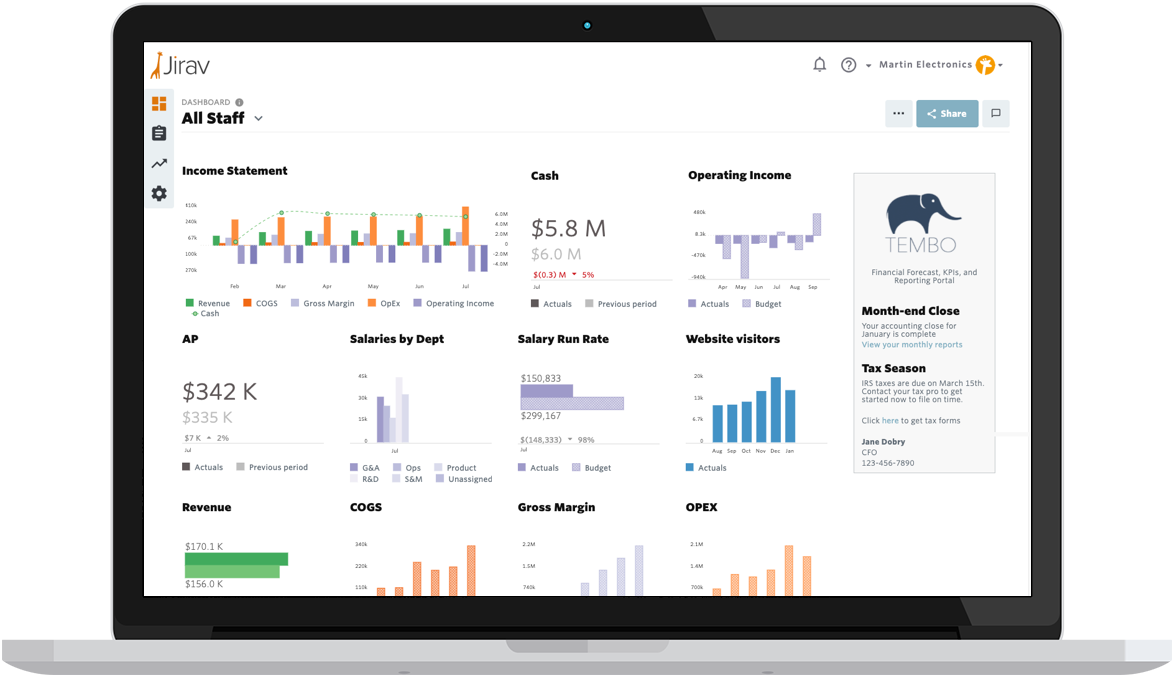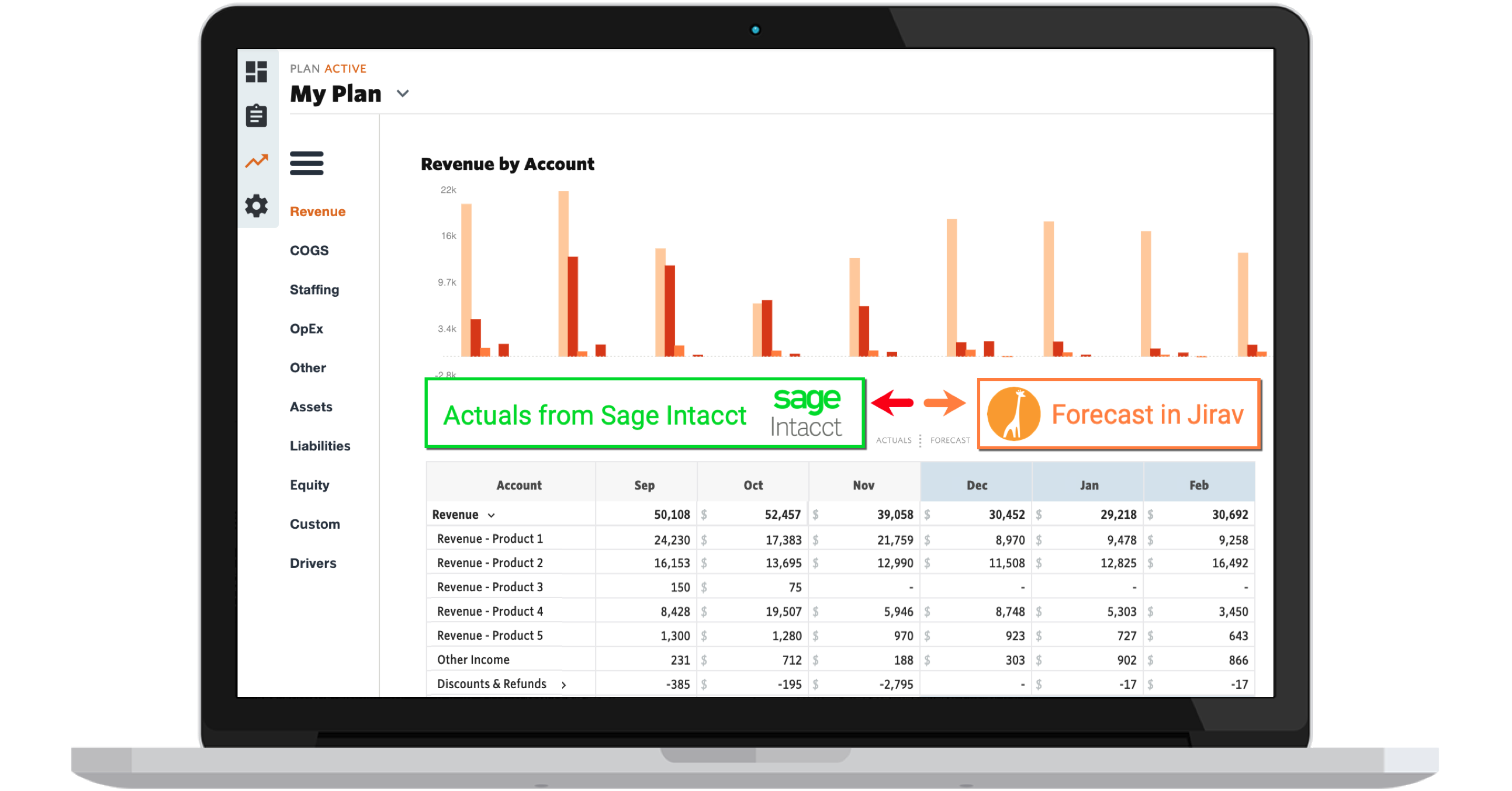Most accounting professionals recognize the increasing importance of providing value to clients beyond crunching numbers and historical reporting. The question is not if you need to provide advisory services, but how?
The “how” question is more challenging because it’s not good enough to just create meetings for the sake of “advising.” We need to do more.
If there is one thing that frustrates executives more than confusing data, it’s wasting their time. In providing advisory services, whether you’re an in-house CFO, fractional CFO, or leader of an accounting firm, your goal is to have conversations with the purpose of helping your clients succeed.
A financial forecast is a monthly deliverable that helps financial professionals achieve that goal. By creating a financial forecast and tracking results against projections, you now have a tool to engage in meaningful conversations and deliver higher-level advisory services.
Business leaders want financial forecasting
The first step in adding value for clients is to put yourself in their shoes. While accountants have their own challenges, you need to think about a CEO’s challenges.
A CEO has to accurately plan for the future. They have to make payroll and build a model that allows them to keep up with growth without running out of cash.
It’s extremely difficult to accurately plan for the future without the right financial forecasting models. Unfortunately, many CEOs are working with the bare minimum when it comes to financial forecasting.
Specifically, a worldwide survey of CEOs by KPMG found that 30% are frustrated with the type of support and information they receive from their finance partners, CFOs, and accounting professionals.
And yet, of the 549 CEOs surveyed, 63% believe the finance chief role will increase in importance over the next three years. And, 70% of CEOs also said finance needs to focus on leveraging cloud-based ERP systems and other emerging technology, underlining the necessity for improved business insights.
Instead of thinking of a financial forecast through the lens of your accounting firm, think of it as essential information for the health of a business. A meaningful financial forecast is a critical missing ingredient most CEOs are craving.
Financial forecasting is critical to business success (or failure)
Underreporting is more than an annoyance or frustration; it can cause a business irreversible damage. A U.S. Bank study found that 82% of small businesses fail because of cash flow mismanagement. That could mean not having enough cash on hand, and more importantly, not properly forecasting cash flow needs.
That’s why financial forecasting is where CEOs can turn when it comes to gaining a competitive advantage. Because finance problems typically grow over time—but can be avoided when businesses take a proactive approach—CPAs become a trusted adviser in looking forward.
Specifically, CEOs are looking to you to provide up-to-date data analytics and financial projections so they can:
- Evaluate their immediate situation
- Structure big-picture ideas
- Assess risk
- Take action for business growth
Few, if any, companies can be consistently profitable or grow without careful financial planning and cash flow management, notes the Corporate Finance Institute, a global provider of online financial modeling and valuation courses.
Businesses that review their cash flow once a year have a 36% survival rate, while businesses that monitor cash flow on a monthly basis have an 80% survival rate. Through advanced financial advisory services, accounting professionals can help companies look ahead, set goals, track progress, and increase a business’ survival rate.
Forecasting is an advisory service for the future
While accounting has historically been considered a more “transactional” relationship, that perception is changing, according to a recent analysis of nearly 1,500 clients of advisory and accounting firms.
More clients want accountants to become partners in a business’ future. They want accountants who can create financial forecasting models to help provide a fuller picture of financial well-being and business viability.
Projecting vital financial figures such as sales volumes, expenses, investment, and profits is instrumental for planning for the future; it is key in predicting a business' success and it should be conducted through a strategic combination of clear targets and key drivers.
Set clear targets
A forecast is a tool that will help your clients achieve their goals, first and foremost. If you are providing a forecast, you can use it as an opportunity to have a meaningful conversation with the client.
To start, you want to know their goals. Having an advisory call doesn’t require a lot of speaking by the accountant. Asking and listening to understand the CEO’s goals and targets is the perfect place to start.
For example, when building out an initial financial forecast, some of the questions you can ask are:
- What are your goals for the next 12 months?
- What do you see as your biggest threats for the next 12 months?
- What do you see as your biggest roadblock to achieving the 12-month goals?
- What are some easy wins in front of you to get momentum in the right direction?
The forecast is going to be data-driven, based on historical information and some assumptions. The goal of the open-ended questions, however, is not to purely build a forecast based on the answers.
The goal is to build rapport and trust, gaining clarity on the goals of the business. With clarity on the goals, you will have a relevant context to connect to your monthly client deliverable.
What are the key drivers?
The follow-up conversation to understanding the goals is breaking them down into key drivers. Typical financial reports provide a huge mess of numbers, and a CEO’s eyes will gravitate toward revenue, costs, and profit.
A monthly profit and loss (P&L) statement and balance sheet are helpful. However, they often lead to more questions than answers. With a financial forecast, you have the ability to compare results to projections. The final numbers in a P&L are caused by specific drivers, and these areas are the basis for excellent dialogue between accountant and business owner.
- If revenue is down: Did you miss sales targets? Was churn higher?
- If revenue is up, but profit is stagnant: Was cost of goods sold (COGS) higher than expected?
- If revenue is up and cash is down: Are you collecting fast enough? Hiring for growth?
The key drivers are illuminated by discrepancies between the projections and actuals. By finding the differences, you can highlight what did not go as planned and make adjustments.
If you can help map out the key activities needed to achieve goals, you’ll be providing a valuable service that sets you apart from the majority of accounting professionals.
The right forecasting solution can help
Joining budgets and historical data to create a robust and accurate financial forecasting model in spreadsheets can be extremely time-consuming.
Having the right planning tools can mean the difference between a smooth and efficient forecasting process vs an arduous and inaccurate process.
And, because building forecasting models in Excel is inefficient, inaccurate, and often ineffective, more and more accountants are turning to cloud-based systems to create reliable, more informed financial forecasting models for their clients.
Tools like Jirav’s Financial planning & analysis as a service provide powerful and robust financial analysis, reporting, and forecasting tools for accounting professionals.
Accounting professionals implementing Jirav can launch a planning and analysis function with clients within a matter of hours or days.
Every company needs a financial forecast model. While creating financial statements relies on historical data, creating financial forecasts involves connecting a company’s vision and strategy and projecting what the financial future will look like. Without a financial forecast, most companies are gambling on the future.
You can help your clients avoid a bleak future by helping them to forecast what a successful future could look like. Schedule time to see for yourself how Jirav can help.











